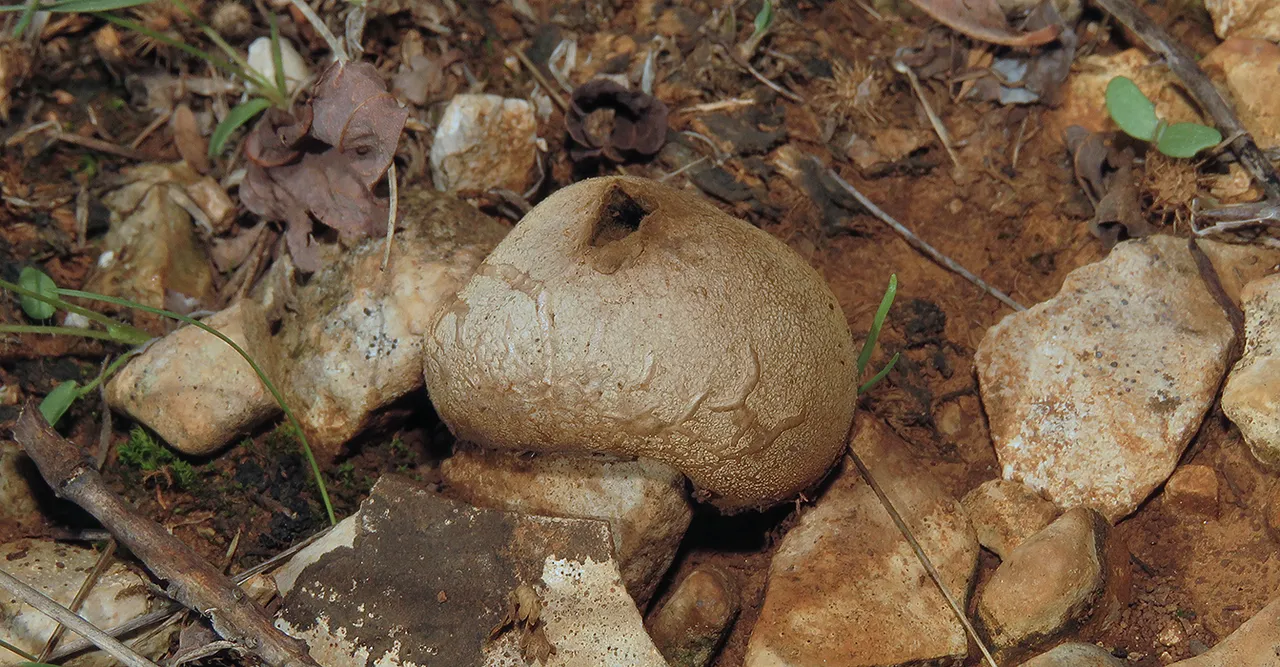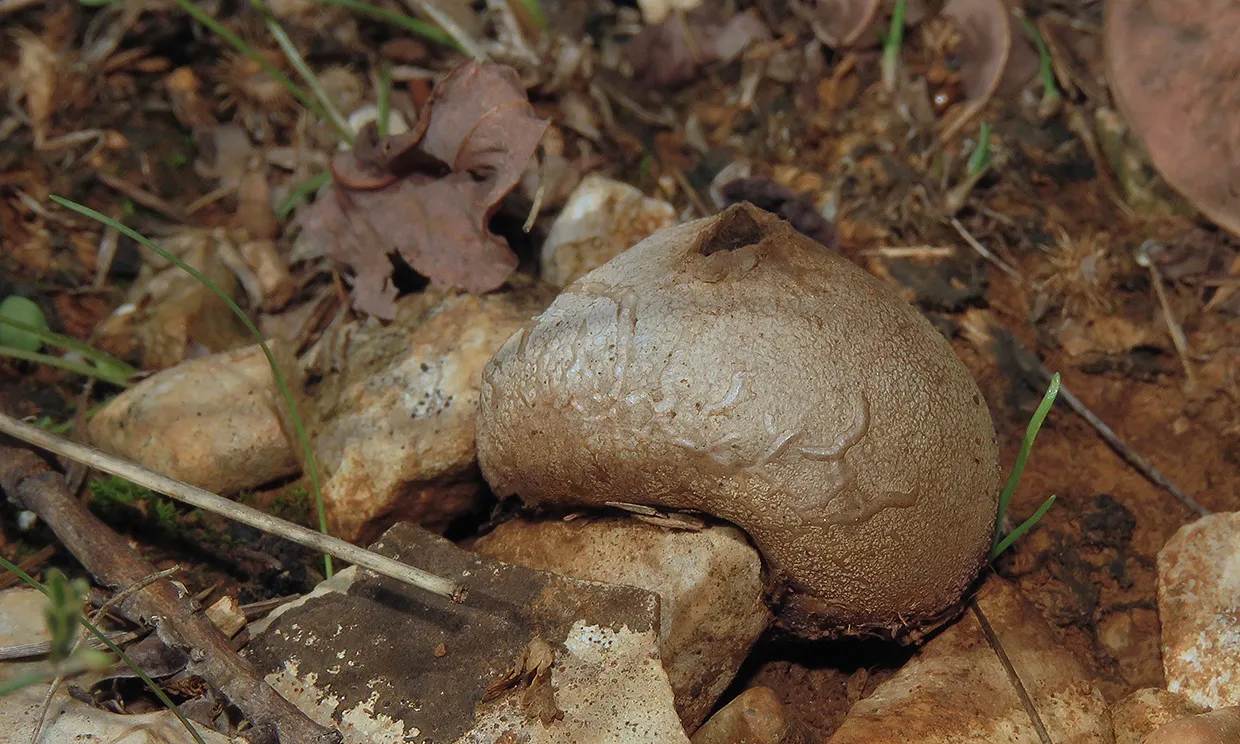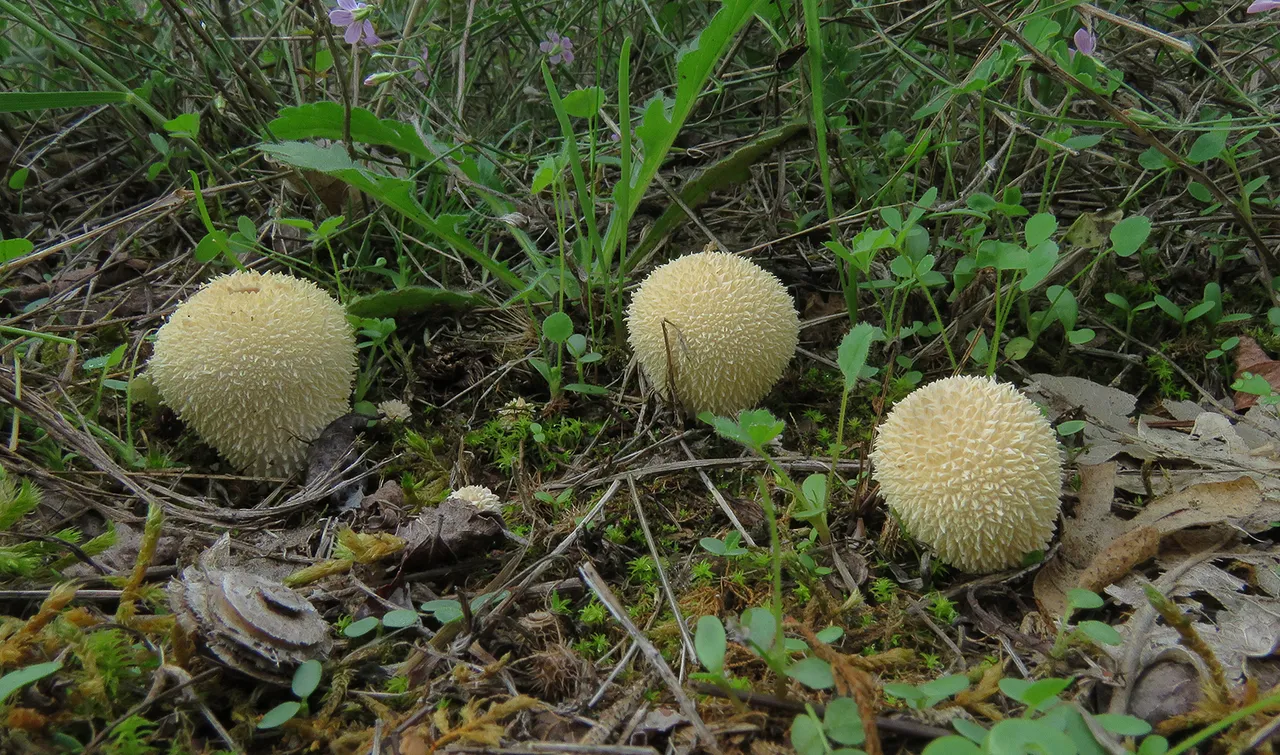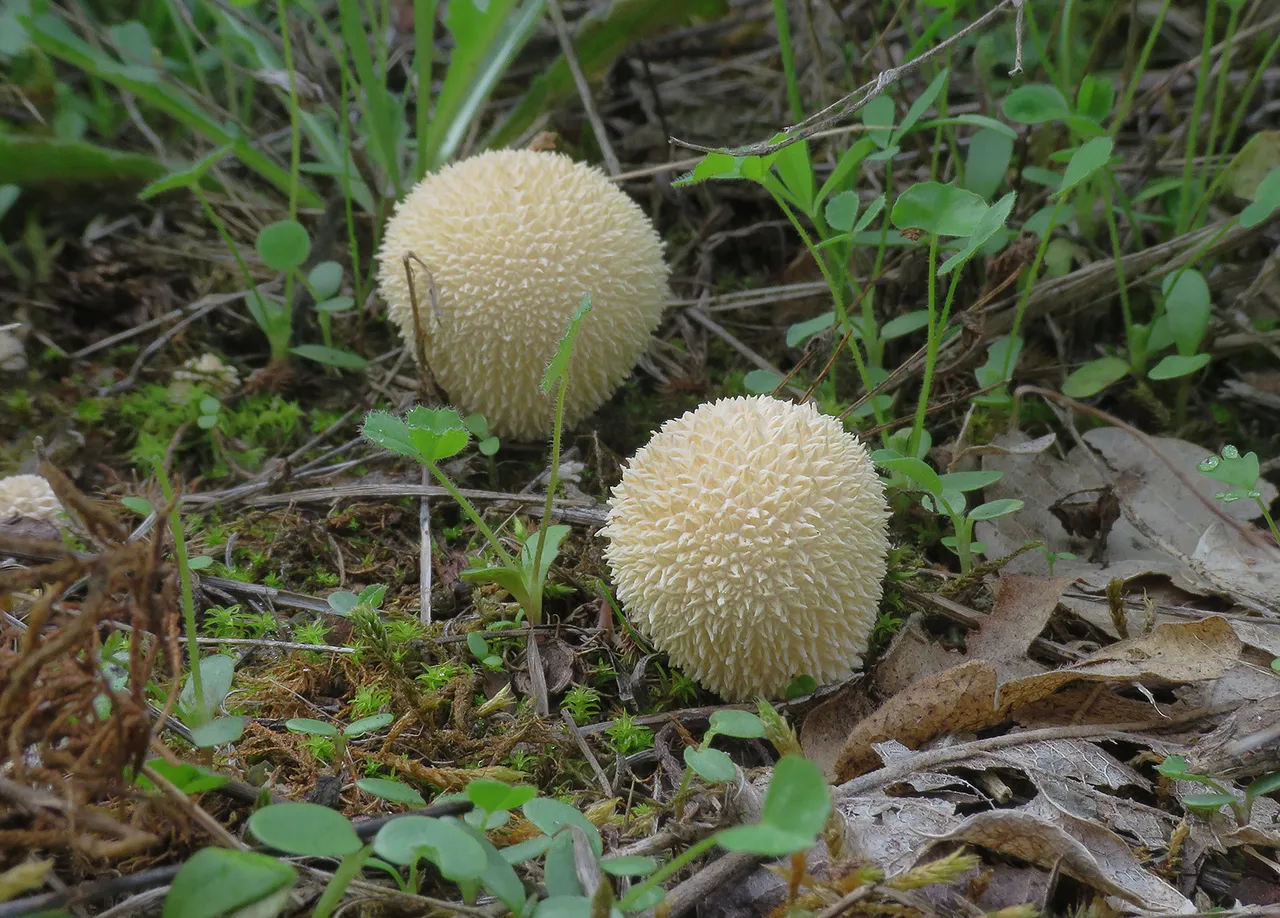Well, I found more than three puffballs today so the title could be perceived as slightly misleading ...
... but it all started with these three Lycoperdon marginatum mushrooms.

I drove about 30 - 35 kilometers north of my hometown and stopped by the side of the road, somewhere between two small towns, Vodnjan and Svetvinchenat.

When I came out of the car, I started sniffing around the shrubs along the narrow path that leads from the meadow into the woods. I found a jumping spider there, and then ...

... after taking a couple of photographs through the macro lens ...
... I noticed the puffballs down on the ground.

For this photograph, I mounted the macro lens again. The surface of the young fruiting body looks like the texture of a towel.
Lycoperdon marginatum it's a fairly common puffball in this area. It can be found in open areas at the edge of the woods and in oak or pine groves when the trees grow sparsely.
When it comes to the jumping spider on the shrub above the mushrooms, I can't tell you the name of the species. I spent a couple of hours searching through the Internet but I haven't found what I was searching for. What I can tell you is what you probably already saw. The jumping spider in these photographs is resting on a structure made of silk and dry foliage. While Salticidae spiders don't use silk for hunting, they do build small shelters and they also use threads a bit like the amazing spiderman to help them move around, especially up & down. From twig to twig or from the branches to the ground and vice versa. Or to make the long jumps from high places more secure.
The silk also plays a role in communication and socializing. The threads get soaked with feromones and are left as a trail from which other jumping spiders can decode some useful stuff.
If you compare this photograph to the one that started this post, you may think that they are identical. And you wouldn't be completely wrong. They were both taken from the same spot and the same angle. But the light was different. The sky above the scene was partially cloudy and this shot was taken when a bit of sun passed through and brought a subtle change to the overall atmosphere.
Ten or twelve meters from these lovely puffballs ...
... I found another group of three.

These are the Bovista plumbea puffballs. A meter or two from this trio of relatively young fruiting bodies ...

... I found an old one that looked considerably different ...

... and was ready to release the spores. The releasing mechanism is simple and elegant. When the raindrops put pressure on the sack, the fine powder made of spores flies upwards and spreads in the air. Since the raindrops are a clear sign of the much-needed humidity, what better way to get perfect timing for this process?
Here you can see the wingless nymph of some bug from the Coreidae family ...

... that was photographed on the small Robinia pseudoacacia tree near the puffballs.

When it comes to the bug, I can't tell you the exact species, but this looks almost exactly like the nymph of the Gonocerus acuteangulatus. The only thing is that the abdomen in nymphs of that species is usually green. Maybe the color can vary. Or maybe, this is some related and similar species. I don't know for sure, but I can pretty confidently say that this is some bug from the genus Gonocerus of the Coreidae family.
The following links will take you to the sites with more information about the protagonists of this post. I found some stuff about them there.
https://en.wikipedia.org/wiki/Lycoperdon_marginatum
https://champignouf.com/
https://www.google.com/search?q=Gonocerus+acuteangulatus+nymph&sxsrf=ALiCzsbya70bbgMia2wHWG1Llr31ihsWog:1663770555216&source=lnms&tbm=isch&sa=X&ved=2ahUKEwj9qbmnjKb6AhWUjaQKHWf2AjAQ_AUoAXoECAEQAw&biw=1592&bih=885&dpr=1#imgrc=OpizEAvtfBv_fM
https://en.wikipedia.org/wiki/Jumping_spider
https://en.wikipedia.org/wiki/Bovista_plumbea
AND THAT'S IT. AS ALWAYS IN THESE POSTS ON HIVE, THE PHOTOGRAPHS ARE MY WORK - THE END.









